
Interested in writing for Wisconsin 101?
You can propose your own idea or scroll to choose from one of the objects in the gallery below.
We are also looking for proposals related to the following topics:
- Natural resources
- Civil rights
- The Conservation Movement
- Arts and culture
- Labor history
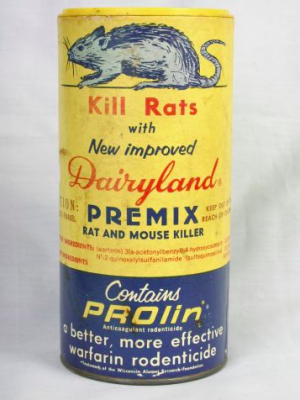
Dairyland Rat Poison
The discovery of the blood thinner Warferin by chemists at UW-Madison in dramatically influenced lives of Americans suffering from heart disease, but it also inspired new kinds of products, like this one: a rat poison produced in Milwaukee. Dig into the history of this object and find out about Wisconsin’s history of invention and some of its unintended– and surprising– consequences!
Image courtesy of the Wisconsin Historical Society, Image ID 100175
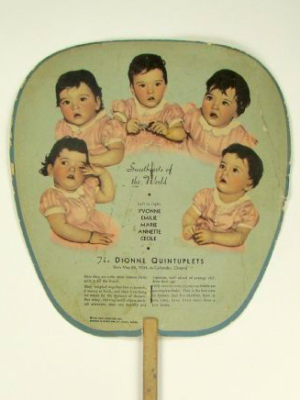
Dionne Quintuplets Fan
Lakeside dyeworks in Milwaukee printed this commemorative fan in 1936 to celebrate the Dionne quintuplets, the first quintuplets known to have survived infancy. Examining their lives and the way that Milwaukee celebrated their growth could tell you a great deal about childhood and health in Milwaukee and Wisconsin.
Image courtesy of the Wisconsin Historical Society, Image ID 97815
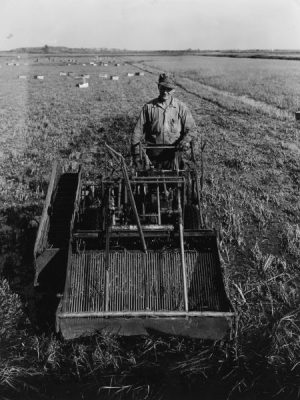
Cranberry Harvesting Machine
This photo depicts a cranberry harvesting machine on the property of the Wisconsin Cranberry Sales Company in Wisconsin Rapids. Cranberries are an important Wisconsin crop and we seek contributions on cranberries, harvesters, or other related objects.
Image courtesy of the Wisconsin Historical Society, Image ID 42534
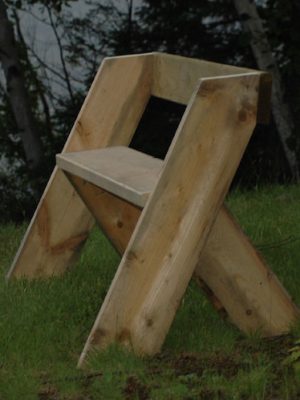
A Leopold Bench
Conservationist, forester, and the father of wildlife ecology, Aldo Leopold, invented this economic method for making simple benches. Leopold became famous after his death for writing The Sand County Almanac.
Image courtesy of Flickr, click image for attribution.
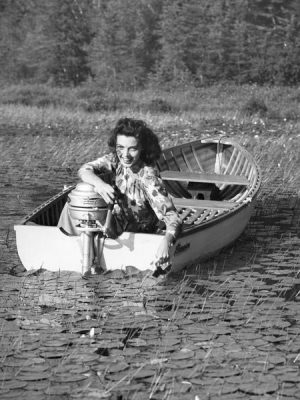
Ole Evinrude Outboard Motor
The first outboard motor had a crank that started to two-cycle engine propelling boats like the one pictured. Ole Evinrude invented the machine in Milwaukee going on to found the Evinrude Motor Company.
Image courtesy of the Wisconsin Historical Society, Image ID 7859
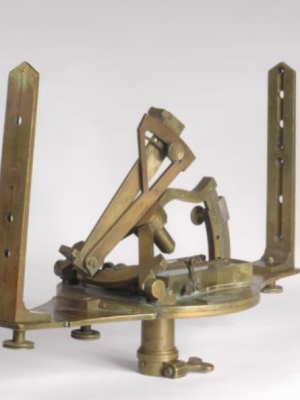
Burt’s Solar Compass
Every wonder why land in Wisconsin was laid out in a grid pattern? This compass can help you dive into that history. The Burt Solar Compass was used to survey land in Wisconsin in the 1840s and 50s.
Image courtesy of the Wisconsin Historical Society, Image ID 99497
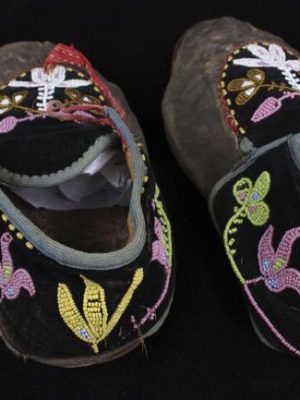
Beaded Moccasins
These brightly beaded moccasins were made around 1900 in a style typical of the Potawatomi and Menominee. Investigating the history of craftwork and clothing could help tell new stories about Native American cultural persistence in Wisconsin.
Image courtesy of the Wisconsin Historical Society, Image ID 84027
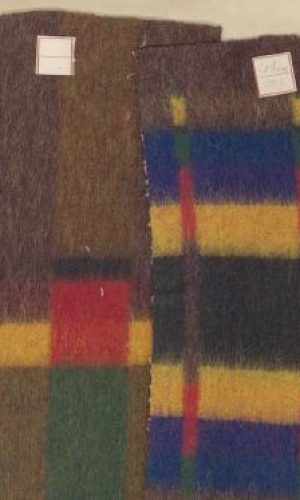
Appleton Woolen Mill Fabric Sample
Did you know that in the 19th century it was impossible to make paper without woolen felt? As one of the only paper-makers’ felt manufacturers west of Ohio, the fabric made at the Appleton Woolen Mill became an essential part of Wisconsin’s logging and paper industries. What can these scraps of felt teach us about agriculture, logging, and manufacturing in Wisconsin?
Image courtesy of the Wisconsin Historical Society, Image ID 108048
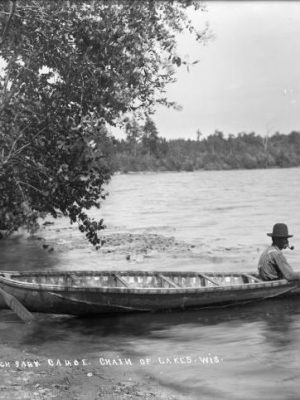
A Birch Bark Canoe
Wisconsin is filled with rivers and lakes, and from the precolonial period to the twentieth century, birch bark canoes were an important way to navigate through the state– and connecting the region to the Great Lakes, the Mississippi and beyond.
Image courtesy of the Wisconsin Historical Society, Image ID 82760
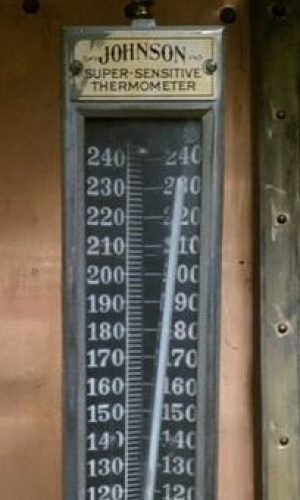
Johnson Controls Super-Sensitive Thermometer
Like your AC in summer? Warren S. Johnson, a professor in Whitewater, WI, invented the first electric thermostat.
Image courtesy of Wikimedia Vommons.
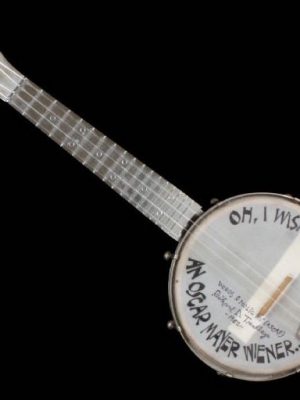
The Oscar Mayer Banjo-Ukulele
Richard Trentlage recorded the jingle “Oh I wish I were an Oscar Mayer Wiener…” on this banjo-ukulele in 1962. What could this object tell us about the meat industry in Wisconsin, advertising, or music in our state?
Image courtesy of the Wisconsin Historical Society, Image ID 106251
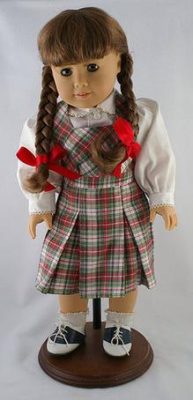
American Girl Doll
Pleasant Rowland formed the Pleasant Company in Middleton in 1986 to manufacture and sell American Girl Dolls, a line of products designed to teach aspects of American history through the perspective of a girl living in that period. What does this object tell us about toys, girlhood, and teaching?
Image courtesy of Wikimedia Commons.
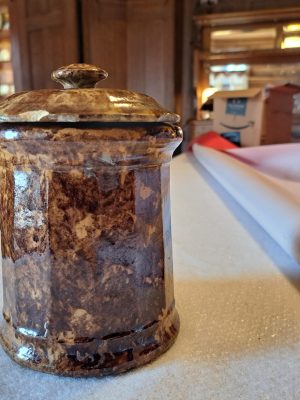
Tobacco Humidor
This molded storage container with lid was made by the Baraboo Pottery which was started in 1851 by Philipp Pointon, an immigrant from Staffordshire, England. The pottery was in production for 6 years and made tens of thousands of pieces of stoneware for the surrounding area. Little was known about the types of pottery made by the Pointons until Wisconsin’s largest cache of mid 19th century potsherds was dug up in 2020 in a backyard in Baraboo.
Object courtesy of the Sauk County Historical Society. Image courtesy of Tom Broman.
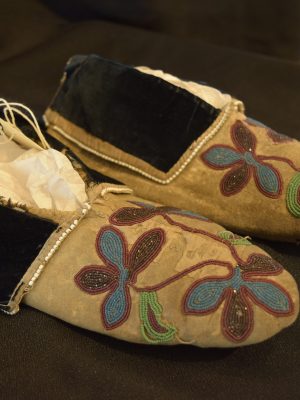
Ho-Chunk Moccasins
Beaded moccasins made by the wife of Chief Yellow Thunder, “Washington Woman”. She went by “Washington Woman” after a trip with 15 Ho-Chunk chiefs leaders to Washington DC in 1828 to meet John Quincy Adams. She was part of the treaty-resisting Ho-Chunk bands who defied the land cession treaties by walking back to their homelands after being deported.
From Oct 9, 1948 Baraboo News Republic article on donation:
Frances Swain says: “They were given to someone in my grandfather’s family. His name was Chipman Swain. He came from Vermont in 1859, and settled in what was then the Village of Newport. My mother, whose maiden name was Mary Warner, came to Baraboo when she was four years old, and used to tell us stories of Yellow Thunder. He was fond of her and used to like to see her doll which we still have.”
Image and object courtesy of the Sauk County Historical Society.